“We see that when we design a new building, in any location, there is an opportunity for it to establish a dialogue with those pre-existing stories of that place.” We chat with Kim Bridgland of Edition Office ahead of Saturday Indesign.

Kim Bridgland is the co-founder of Edition Office, a young and already well-respected Melbourne-based practice. We ask the Saturday Indesign 2019 Ambassador about the studio’s approach, running a practice and Australian identity.
Kim Bridgland: At Edition Office, we are very aware that buildings can carry different personal or cultural narratives or can be a trigger for them. Similarly, the landscapes that we work within are deeply intertwined with a persons own particular relationships and experiences with those places, but are also linked to historical or cultural associations that we may not be aware of. We see that when we design a new building, in any location, there is an opportunity for it to establish a dialogue with those pre-existing stories of that place, or to perhaps establish a new narrative there of its own with the people who interact with it.

Raft studio, designed by Edition Office. Photo by Ben Hosking.
I would say that for me, Australian design is about working towards deceptively simple, and robustly beautiful outcomes, which allows us to strengthen our connections to the places where we live and rest. There is this idea of an Australian lifestyle, of a relaxed and easy going lifestyle, which is increasingly becoming a myth as we tend towards busier and busier lives that allow far less time to slow down. Australian design at its best allows us opportunities to recalibrate and reconnect with the places and people that are truly important to us on a daily basis.
We love to draw on a very wide range of influences for our work, however recently the book ‘Dark Emu’ by Bruce Pascoe was a powerful reminder for us of the mixed understandings we have of the birth of contemporary Australia, which was its colonisation. Our 2019 NGV Commission ‘In Absence’ designed in collaboration with artist Yhonnie Scarce draws on this text and speaks to the histories of permanent villages, agriculture and engineering that were present across Australia before settlement and seeks to become a site for sharing stories and knowledge about those practices. We’re also fascinated with the material experimentation in the work of Anne Holtrop who develops incredibly engaging outcomes by thinking anew about very simple and sometimes crude techniques.

Completing any project is always an exhilarating moment, which is when with our clients and builders we get to finally experience this extraordinary thing that we have all been working towards, typically for years. The joy of seeing and experiencing the built realisation of our design ideas is a pretty special thing, and sharing that moment with our clients is unbeatable. The lows tend to be all of the many hurdles and delays in finally getting to that point.
An ideal client is someone who is open to really investigating the ways in which they live without holding on too tightly to patterns of living that we have all inherited over the years. It is often in these conversations, where we discuss and come to understand what a client is really hoping to achieve that can often lead to design outcomes in a project that are their favourite elements of a project, and which they were never aware that they were missing.

Hawthorn House by Edition Office, which is shortlisted in The Building at the 2019 INDE.Awards. Photo by Ben Hosking.
Our network is so important to us. We tend to push the boundaries on most components of our projects, which means working with suppliers and fabricators who understand what we’re trying to achieve and who can work with us to get the most out of standard systems, or to allow us to customise solutions. We learn every day from our suppliers and network of makers and builders, and this process of constant learning tends to trigger new design possibilities within our projects.
I’m not typically one for favourites but the House Vandenhaute-Kiebooms, by the Belgian architect Juliaan Lampens is probably a project that I will always look back on with admiration. The simplicity and restraint in the home’s design is remarkable when you can understand the impact that the careful and considered spatial and material gestures have on a way of living a life. It is exactly this balance that we hope to achieve with our own work. Not the creation of ‘Architecture’, a thing to be observed and which sits apart from us, but the creating of an enabling and grounding scaffold for our lives to be lived.
How we design to address our changing climate is vital to ensuring a stable and equitable future, and must be addressed holistically across all facets of design. However, we must also work to support our social and cultural needs during the rapidly changing global landscape that comes with it. This is a constant requirement of design of course, as much now as it always has been, however the methods to tackle climate change are known and it is our own social and political inertia, our cultural practice which holds us back from making the decisive changes that we know technically are needed. The solutions, which are to work are solutions that enable a sense of meaning and a sense of connectedness to that process.
Kim will be moderating a panel talk during Saturday Indesign ‘On Belonging: Narrative and Cultural Expression in Architecture and Design‘ with Eugenia Lim and Lou Weis. Register now for Saturday Indesign, 22 June, Melbourne.
INDESIGN is on instagram
Follow @indesignlive
A searchable and comprehensive guide for specifying leading products and their suppliers
Keep up to date with the latest and greatest from our industry BFF's!
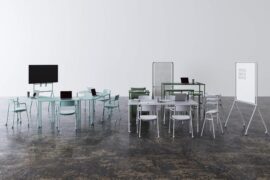
Welcomed to the Australian design scene in 2024, Kokuyo is set to redefine collaboration, bringing its unique blend of colour and function to individuals and corporations, designed to be used Any Way!
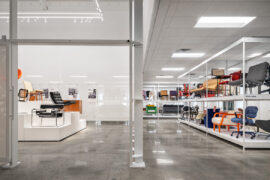
The undeniable thread connecting Herman Miller and Knoll’s design legacies across the decades now finds its profound physical embodiment at MillerKnoll’s new Design Yard Archives.
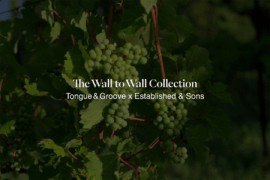
London-based design duo Raw Edges have joined forces with Established & Sons and Tongue & Groove to introduce Wall to Wall – a hand-stained, “living collection” that transforms parquet flooring into a canvas of colour, pattern, and possibility.
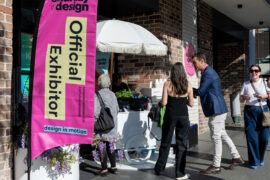
Collingwood is one of three precincts at Saturday Indesign 2025 on 6th September – find out what’s on there!
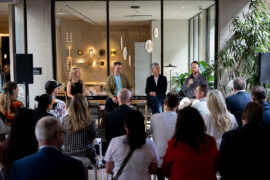
The CBD and South Melbourne Precinct promises a day of design experiences that balance movement, wellbeing, innovation and hospitality.
The internet never sleeps! Here's the stuff you might have missed
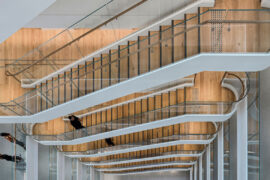
Brad Krauskopf, CEO & Founder of Hub Australia, tells us about Hassell’s design for Hub Australia Martin Place.
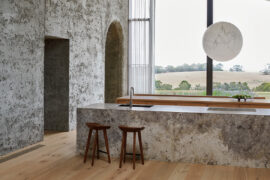
The INDE.Awards 2025 has named House on a Hill by Leeton Pointon Architects and Allison Pye Interiors as the winner of The Interior Space category, presented by Tongue & Groove. This multigenerational country home on Bunurong Country redefines residential architecture and design with its poetic balance of form, function, and sanctuary.